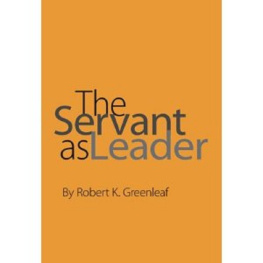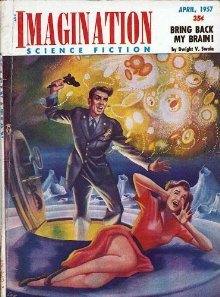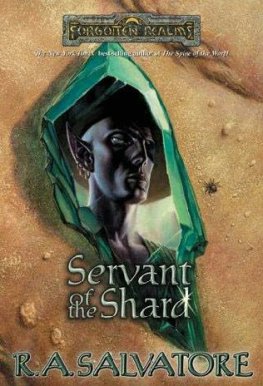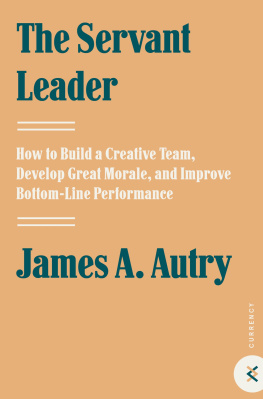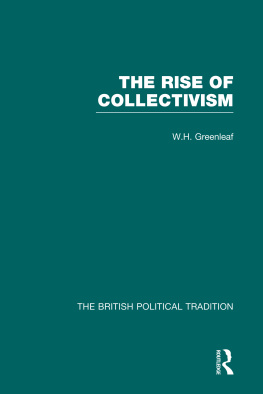Robert Greenleaf - The Servant as Leader
Here you can read online Robert Greenleaf - The Servant as Leader full text of the book (entire story) in english for free. Download pdf and epub, get meaning, cover and reviews about this ebook. year: 2012, publisher: The Greenleaf Center for Servant Leadership, genre: Romance novel. Description of the work, (preface) as well as reviews are available. Best literature library LitArk.com created for fans of good reading and offers a wide selection of genres:
Romance novel
Science fiction
Adventure
Detective
Science
History
Home and family
Prose
Art
Politics
Computer
Non-fiction
Religion
Business
Children
Humor
Choose a favorite category and find really read worthwhile books. Enjoy immersion in the world of imagination, feel the emotions of the characters or learn something new for yourself, make an fascinating discovery.
- Book:The Servant as Leader
- Author:
- Publisher:The Greenleaf Center for Servant Leadership
- Genre:
- Year:2012
- Rating:4 / 5
- Favourites:Add to favourites
- Your mark:
- 80
- 1
- 2
- 3
- 4
- 5
The Servant as Leader: summary, description and annotation
We offer to read an annotation, description, summary or preface (depends on what the author of the book "The Servant as Leader" wrote himself). If you haven't found the necessary information about the book — write in the comments, we will try to find it.
The Servant as Leader — read online for free the complete book (whole text) full work
Below is the text of the book, divided by pages. System saving the place of the last page read, allows you to conveniently read the book "The Servant as Leader" online for free, without having to search again every time where you left off. Put a bookmark, and you can go to the page where you finished reading at any time.
Font size:
Interval:
Bookmark:
THE SERVANT AS LEADER
Copyright The Robert K. Greenleaf Center 1991, 2008
All Rights Reserved
This essay was originally published in 1970 by Robert K. Greenleaf. No part of this publication may be reproduced, stored in a retrieval system, or transmitted in any form or by any means, electronic, mechanical photocopying, recording or otherwise without prior permission by the Greenleaf Center.

Published by The Greenleaf Center for Servant Leadership 770 Pawtucket Drive, Westfield, IN 46074 Printed in the United States of America
Revised Printing 2008
Design by Joe Hunt

The Servant as Leader is the first of four essays on the role of servant. The second is The Institution as Servant, followed by Trustees as Servants, and Teacher as Servant (Paulist Press 1979).
This revision of the 1970 edition of The Servant as Leader is the fruit of much helpful criticism, and more is welcomed. It is offered again not as a final or complete statement, but as a record of thinking in transition that is drawn more from experience and searching than from scholarship.
Behind what is said here is a twofold concern: first for the individual in society and his bent to deal with the massive problems of our times wholly in terms of systems, ideologies, and movements. These have their place, but they are not basic because they do not make themselves. What is basic is the incremental thrust of an individual who has the ability to serve and lead.
My second concern is for the individual as a serving person and his tendency to deny wholeness and creative fulfillment for himself by failing to lead when he could lead.
Overarching these is a concern for the total process of education and its seeming indifference to the individual as servant and leader, as a person and in society, on the assumption that intellectual preparation favors his optimal growth in these ways when, in fact, quite the reverse may be true.
Part of the problem is that serve and lead are overused words with negative connotations. But they are also good words and I can find no others that carry as well the meaning I would like to convey. Not everything that is old and worn, or even corrupt, can be thrown away. Some of it has to be rebuilt and used again. So it is, it seems to me, with the words serve and lead.
Robert K. Greenleaf
SERVANT AND LEADER. Can these two roles be fused in one real person, in all levels of status or calling? If so, can that person live and be productive in the real world of the present? My sense of the present leads me to say yes to both questions. This paper is an attempt to explain why and to suggest how.
The idea of The Servant as Leader came out of reading Herman Hesses Journey to the East. In this story we see a band of men on a mythical journey, probably also Hesses own journey. The central figure of the story is Leo who accompanies the party as the servant who does their menial chores, but who also sustains them with his spirit and his song. He is a person of extraordinary presence. All goes well until Leo disappears. Then the group falls into disarray and the journey is abandoned. They cannot make it without the servant Leo. The narrator, one of the party, after some years of wandering finds Leo and is taken into the Order that had sponsored the journey. There he discovers that Leo, whom he had known first as servant, was in fact the titular head of the Order, its guiding spirit, a great and noble leader.
One can muse on what Hesse was trying to say when he wrote this story. We know that most of his fiction was autobiographical, that he led a tortured life, and that Journey to the East suggests a turn toward the serenity he achieved in his old age. There has been much speculation by critics on Hesses life and work, some of its centering on this story which they find the most puzzling. But to me, this story clearly saysthe great leader is seen as servant first, and that simple fact is the key to his greatness. Leo was actually the leader all of the time, but he was servant first because that was what he was, deep down inside. Leadership was bestowed upon a man who was by nature a servant. It was something given, or assumed, that could be taken away. His servant nature was the real man, not bestowed, not assumed, and not to be taken away. He was servant first.
I mention Hesse and Journey to the East for two reasons: first to acknowledge the source of the idea of The Servant as Leader. Then I want to use this reference as an introduction to a brief discussion of prophecy.
Fifteen years ago when I first read about Leo, if I had been listening to contemporary prophecy as intently as I do now, the first draft of this piece might have been written then. As it was, the idea lay dormant for eleven years until, four years ago, I concluded that we in this country were in a leadership crisis and that I should do what I could about it. I became painfully aware of how dull my sense of contemporary prophecy had been. And I have reflected much on why we do not hear and heed the prophetic voices in our midst (not a new question in our times, nor more critical than heretofore).
I now embrace the theory of prophecy which holds that prophetic voices of great clarity, and with a quality of insight equal to that of any age, are speaking cogently all of the time. Men and women of a stature equal to the greatest of the past are with us now addressing the problems of the day and pointing to a better way and to a personeity better able to live fully and serenely in these times.
The variable that marks some periods as barren and some as rich in prophetic vision is in the interest, the level of seeking, the responsiveness of the hearers. The variable is not in the presence or absence or the relative quality and force of the prophetic voices. The prophet grows in stature as people respond to his message. If his early attempts are ignored or spurned, his talent may wither away.
It is seekers, then, who make the prophet; and the initiative of any one of us in searching for and responding to the voice of a contemporary prophet may mark the turning point in his growth and service. But since we are the product of our own history, we see current prophecy within the context of past wisdom. We listen to as wide a range of contemporary thought as we can attend to. Then we choose those we elect to heed as prophetsboth old and newand meld their advice with our own leadings. This we test in real-life experiences to establish our own position.
Some who have difficulty with this theory assert that their faith rests on one or more of the prophets of old having given the word for all time and that the contemporary ones do not speak to their condition as the older ones do. But if one really believes that the word has been given for all time, how can one be a seeker? How can one hear the contemporary voice when one has decided not to live in the present and has turned him off?
Neither this hypothesis nor its opposite can be proved. But I submit that the one given here is the more hopeful choice, one that offers a significant role in prophecy to every individual. One cannot interact with and build strength in a dead prophet, but he can do it with a living one. Faith, Dean Inge has said, is the choice of the nobler hypothesis.
Next pageFont size:
Interval:
Bookmark:
Similar books «The Servant as Leader»
Look at similar books to The Servant as Leader. We have selected literature similar in name and meaning in the hope of providing readers with more options to find new, interesting, not yet read works.
Discussion, reviews of the book The Servant as Leader and just readers' own opinions. Leave your comments, write what you think about the work, its meaning or the main characters. Specify what exactly you liked and what you didn't like, and why you think so.

